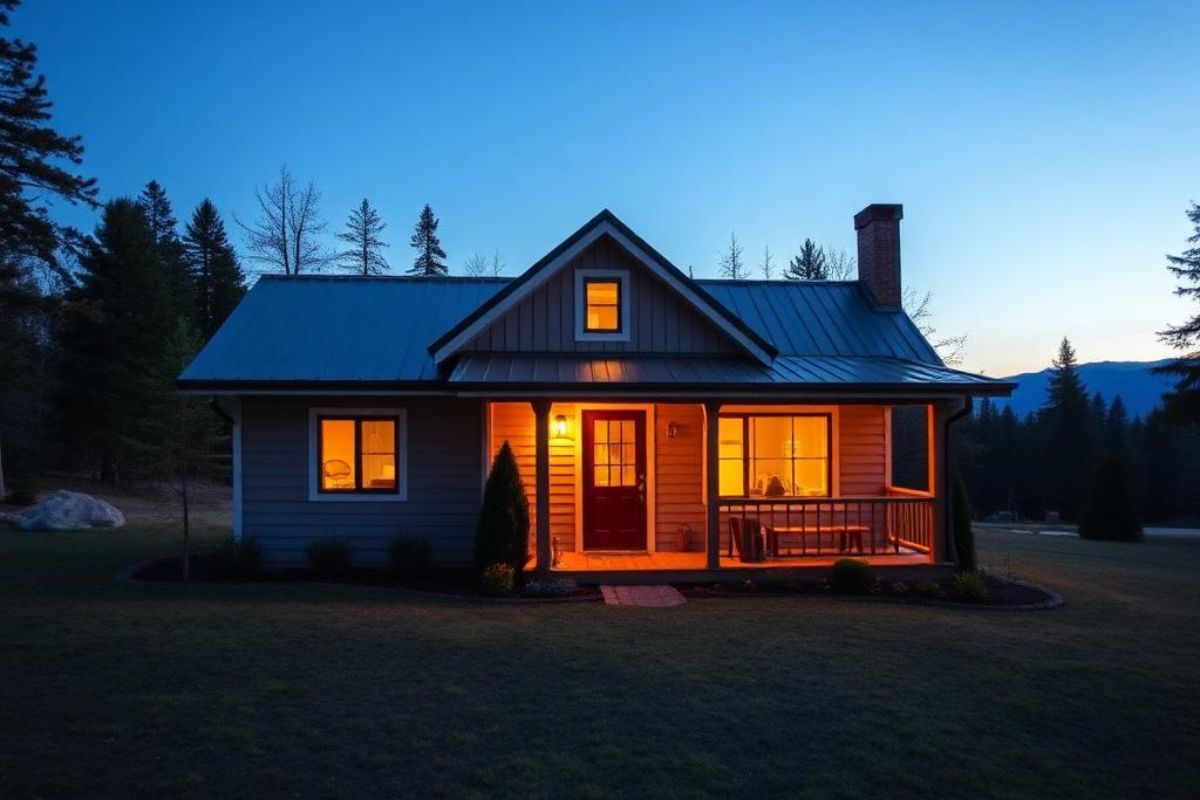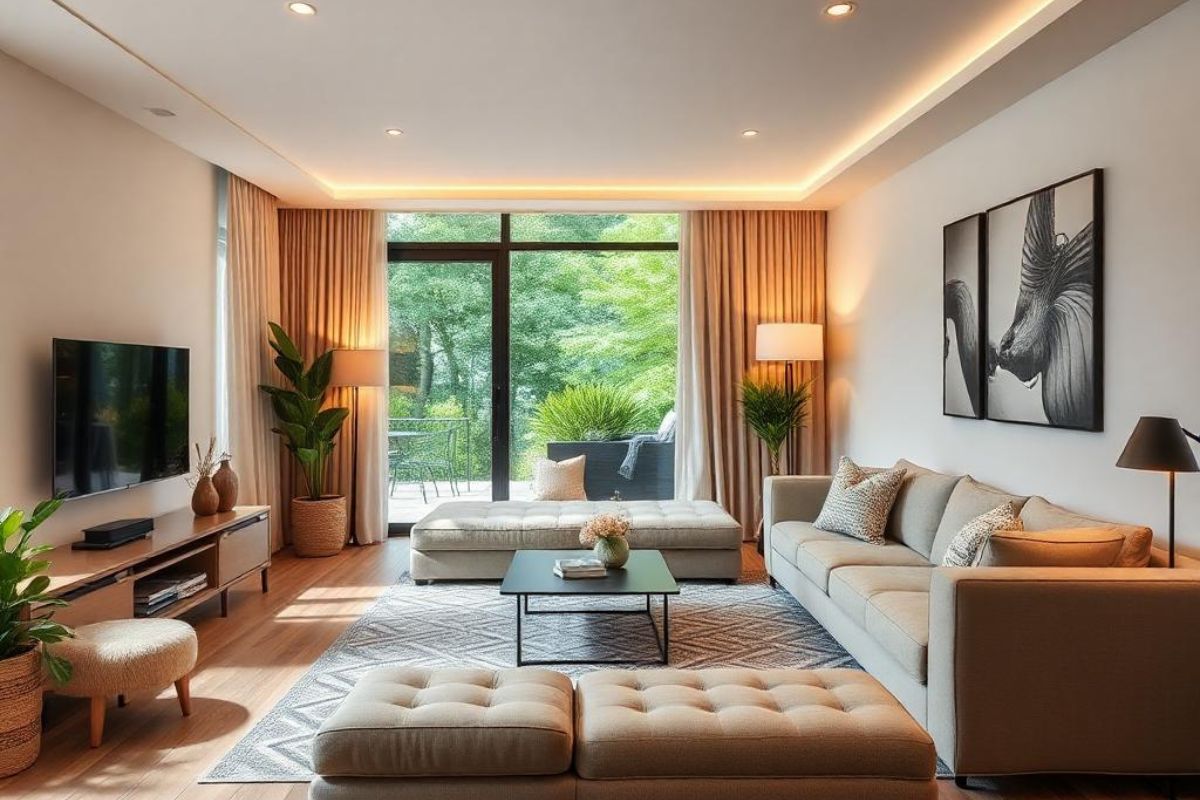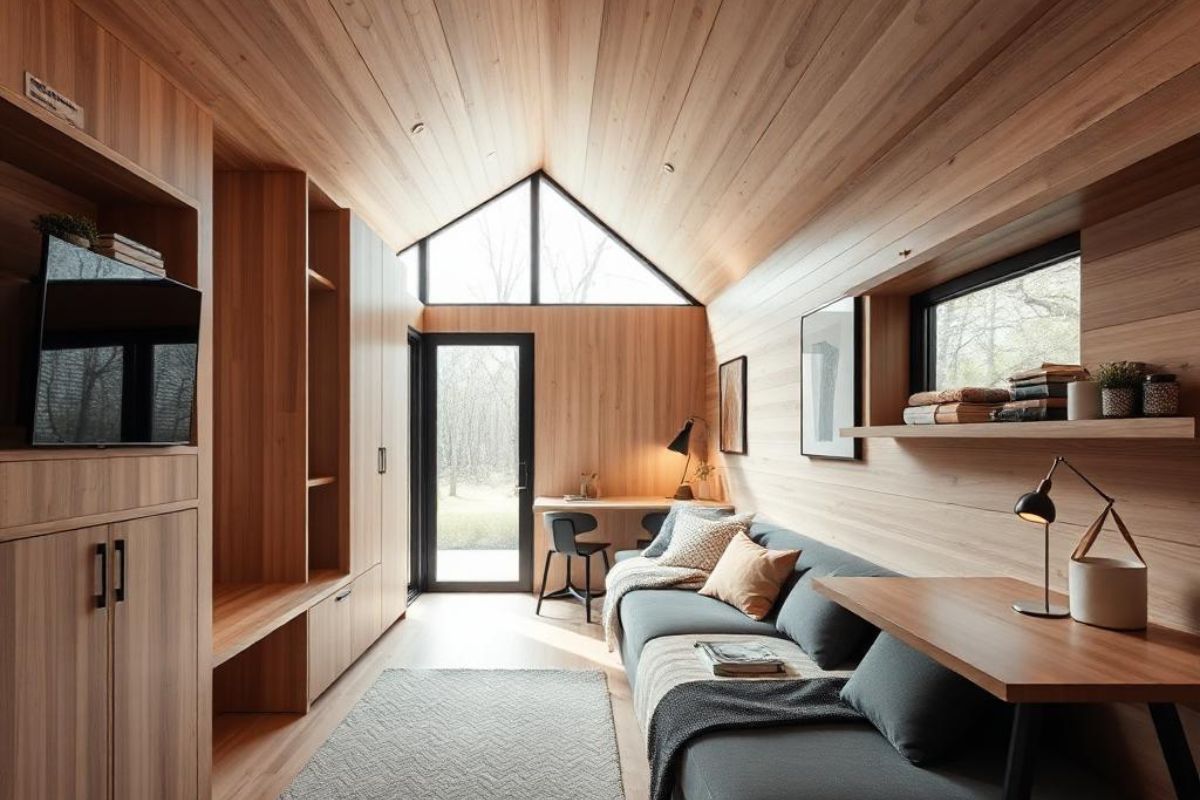Fortunately, the key to maximizing small spaces lies in looking up—literally. With just a little brainstorming, you can transform even the tiniest of homes into comfortable living areas.
From lofted beds to clever lighting solutions, there are so many ways to use vertical space to match your vibe. In this article, we’ll explore one of the best strategies to make the most of your home's height and elevate your small space living experience.
1. Floating Elements
Floating devices can help a lot when you are trying to keep your house clutter-free and visually appealing. If you're considering homes for sale in Toronto, incorporating floating elements could be a game-changer.
Let's talk about a not-so-spacious living room— you can mount your TV on the wall and install floating shelves below to keep electronics (remotes, gaming consoles, DVD players, etc.)
Having floating shelves around is a great way to keep things together. Most people think of books, plants, or spice racks when talking about floating shelves. But the truth is, you can have them installed anywhere— in the kitchen, bathroom, or on the doors. Let's look at a few examples:
Bedroom and Living Room
For bedrooms and living rooms, you can use wall-mounted nightstands or side tables next to beds or sofas. This reduces the need for bulky furniture and provides surface space for lamps, books, or water bottles.
Now let's extend this approach to clothing storage. There could be a floating clothes rod under shelves or above dressers in your bedroom. This might save you so much closet space.
In living rooms, installing a swing can add a cozy and inviting touch. And finally, a wall-attached vanity with a mirror is a must-have especially if you are living in tiny spaces.
Bathroom
Floating shelves or towel racks are popular even in spacious homes. They are great for storing toiletries, soap dispensers, towels, and whatnot. However, as homes get smaller every day, there's a growing appeal for floating bathtubs and toilets.
This is because these fixtures don't touch the floor. Which not only creates an illusion of a larger space but also prevents moisture build-up. Therefore, no more hard time cleaning!
Kitchen
To maintain an open and airy feeling in your tiny kitchen, consider incorporating floating items. Start with floating cabinets to keep basic pantry items, glassware, and dishes— but don't stop there!
Picture an extended counter that folds away when not in use and a magnetic knife strip on the wall. On the ceiling, there's a floating pot rack or utensil hooks. All these things and there's still space left for the sink and a floating dish rack. With just a little planning, you can create a very coordinated kitchen setup with zero foot traffic as a bonus.
2. Lofted Beds
Lofted beds are raised off the ground for the sole reason of creating extra space underneath that you can use for storage. When planning your layout, don’t forget to consider different flooring options that suit your tiny home’s aesthetic and practical needs.
When using a lofted bed, make sure it's high enough to fit comfortably in the room and give you useful space underneath. For safety, pick a bed with strong guardrails to prevent falls and, more importantly, a solid frame. Also, make sure there’s an easy and safe way to climb up (a ladder or stairs), especially if the bed is very high.
Since we’re on the topic of beds, we cannot forget to mention Murphy beds. Also known as wall beds, Murphy beds are designed to fold up into a cabinet or closet. They instantly free up floor space when not in use. Moreover, they're ideal for multipurpose rooms where you might need an extra bed occasionally but want to keep the room open most of the time.
And, of course, a quick shout-out to sofa beds because they combine seating and sleeping into one versatile piece of furniture. Sofa beds are great for living rooms, guest rooms, or anywhere you need to double up on function without compromising on style or comfort.
3. Strategic Placement of Mirrors and Glass Items
Using mirrors and glass items in a small, cramped apartment can make a big difference by creating an illusion of openness. Start by hanging or leaning large mirrors against the walls. Keep in mind that a floor-to-ceiling mirror will make a small room feel taller, while a wide mirror can make a narrow space seem wider.
When positioning mirrors, place them near or opposite windows to reflect natural light throughout the room. You can also place mirrors behind lamps or pendant lights to amplify the existing light and brighten up your space. For a more cohesive look, consider layering glass furniture with mirrors—like a glass coffee table paired with a large wall mirror.
To take it a step further, opt for a mirrored accent wall or wall panels. A mirrored accent wall in the hallway or living room can create a striking effect, doubling the visual space and adding depth.
If you prefer a more subtle approach, use smaller, mirrored decorative items such as trays, picture frames, or vases. These pieces can make surfaces feel less cluttered while adding a touch of elegance to the room.
4. Vertical Gardening
Vertical jungles are very popular among tiny homeowners simply because they are affordable, easy to maintain, and look very pretty. For additional inspiration, explore more garden ideas to maximize your outdoor space
This type of gardening allows you to make the most of your available space by growing plants upward. It's perfect for small balconies, patios, or any area with limited ground space.

When you grow plants on a wall, they create a natural layer that helps insulate your home. This means your house stays cooler in the summer by blocking heat and warmer in the winter by keeping out the cold, which might help lower your electricity bills— just kidding!
Plus, vertical gardens are great for your mental health. Being around plants has a calming effect and can help reduce stress and anxiety, even in a busy city or small home. It’s like having a mini green oasis that makes you feel happier and more relaxed.
5. Creative Use of Nooks and Crannies
Turn those small gaps or unused spaces under the stairs, beneath benches, or along walls into concealed storage with custom drawers. These drawers can hold everything from seasonal clothing and accessories to kids’ toys or office supplies. Thus keeping your home tidy and clutter-free.
Make use of awkward corners to install shoe racks. It could be a vertical shoe rack by the entryway or pull-out shelves inside a closet to keep all your sole mates organized and easily accessible.
Create a cozy snug spot in an unused corner or window alcove. You might add a comfy chair or built-in bench. Throw in some plush cushions, and include a small bookshelf or wall-mounted shelves to store your favorite books. And voilà! This little corner can be your personal retreat for relaxation and quiet time.
End Note
Floating shelves, lofted beds, or vertical gardens— you name it. Using vertical space helps you make the most of every inch of your home. Nothing can top it.
So go on, scroll through Pinterest for hours, and brainstorm all you want. With some creativity and planning, you can turn even the smallest areas into places that are open, efficient, and uniquely yours.






Share: